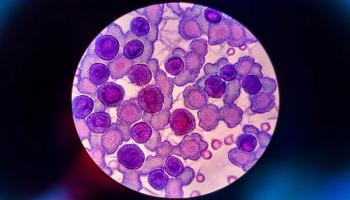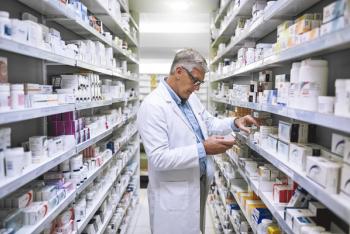
- November 2010 Cough & Cold
- Volume 76
- Issue 11
What Patients Should Know About Generic Drugs: A Resource Guide for Pharmacists
A wealth of resource is available to help pharmacists build public trust in the quality and efficacy of generic medications.
A wealth of resource is available to help pharmacists build public trust in the quality and efficacy of generic medications.
What Patients Should Know About Generic Drugs: A Resource Guide for Pharmacists
In the ongoing battle to contain rapidly escalating health care costs, switching from brand-name to generic drugs can help patients dramatically reduce their expenses. Generics are an effective therapeutic alternative to branded medications and can offer a 30% to 80% cost savings for both patients and health system payers, according to the Generic Pharmaceutical Association (GPhA).1
In late July 2010, an analysis of an IMS Health study of prescription drug use in the United States found that generic versions of brand-name drugs saved the American health care system more than $824 billion over the past decade, including $139.6 billion in 2009 alone.2 The study, commissioned by GPhA to provide and analyze brand and generic prescription drug sales data for the 10-year period from 2000 to 2009, reported that generics fill 75% of prescriptions dispensed in the country today, but account for only 22% of total drug spending.
How do pharmacists build trust in generics with patients who are accustomed to relying on well-known brands? Pharmacists can educate consumers efficiently by supplying valuable information that reinforces the public’s confidence in the quality and efficacy of generics as well as addresses consumers’ questions about allergens and drug—drug interactions.
The push to transition patients from branded to generic products has been strong for the past 12 years. This refresher is intended for established pharmacists who have been aware of the quality and value of generics over this time, as well as for newer pharmacists—highlighting resources available to them to inform patients about generics and help to answer common questions and concerns.
Efficacy and Quality of Generics
As most pharmacists are aware, the efficacy of generic drugs is established through bioequivalence studies performed by the manufacturer. The FDA compares the bioavailability of a drug’s active ingredients in the bloodstream to ensure that the generic matches the brand’s profile. A generic drug approved by the FDA is identical—or bioequivalent—to a brand-name drug in dosage form, safety, strength, route of administration, quality, performance characteristics, and intended use.3
When evaluating generic drug efficacy, it is important for patients to distinguish between medication side effects versus a lack of therapeutic effect. All drugs have side effects—some minor inconveniences, others major considerations—that may rule out use. Before starting on a medication, patients should be made aware of known side effects through their doctor, pharmacist, or the manufacturer’s packaging and Web site information.
If a patient experiences side effects, particularly an allergic reaction such as rash, swelling, or fever, or no therapeutic effect, they should first consult the prescribing physician and the resources mentioned above. If the patient’s medical issues are still unresolved, they can ask for assistance from the pharmacy where the medication was purchased or contact the manufacturer directly. After ruling out a dispensing error, pharmacists should check the drug lot number and product codes and report the problem to the supplier. Manufacturers are required to investigate these events and report them to the FDA.
How can consumers be confident that a generic drug is a high-quality product? Similar to branded medicines, generics are manufactured according to strict procedures approved by the FDA.4 Raw materials must be purchased from reputable sources and meet United States Pharmacopeia (USP)/National Formulary pharmacopeial standards. The drugs must be produced under current good manufacturing practices and reviewed by Quality Control and Quality Assurance, and are subject to FDA plant inspections and certifications a minimum of every 2 years. Products are regularly tested to ensure that they meet USP and in-house requirements and can be traced by batch number, lot number, and expiration date. Product stability is monitored, and market feedback and other data are reviewed annually to flag adverse trends that may indicate a quality issue.
A Wealth of Information for Pharmacists and Consumers
A wide range of print and online resources are available to both pharmacists and patients for information on generic drugs.
For example, some generic products feature pharmacistdefined labels designed to help reduce dispensing errors and add efficiency to filling prescriptions. The label and prescribing information sheets contain extensive facts about the medication, such as product ingredients, dosage instructions, potential drug interactions, and safety precautions.
Pharmacists maintain package outserts for each drug, which list active and inactive ingredients. Either type may trigger reactions in some patients. Outserts also give contraindications, possible adverse effects, the manufacturer’s Web site URL, and other contact information. The company’s Web site should contain a product catalog with detailed information on every drug it markets.
The FDA Web site—www.fda.gov— offers a wealth of information for both pharmacists and patients. Consumers can research medications and report adverse events on FDA MedWatch.5 Additional online resources include Drugs.com6 and Epocrates,7 which enables mobile and Web-based health management.
Evaluating Allergens
Pharmacists can provide important information to patients about drug allergens, which in extreme cases can provoke a fatal reaction. Potential allergens include glutens, alcohol, shellfish, cornstarch, lactose, and dyes. Even trace amounts of these substances (eg, one millionth of a percent of alcohol wash) can be a problem if a patient is highly sensitive. A skin rash or swelling of the extremities can indicate an allergy to a drug ingredient. Anaphylactic shock, a severe whole-body allergic reaction in which airways quickly become constricted, can cause respiratory or cardiac arrest if not treated immediately with epinephrine and antihistamines.8
Today, the most common allergen inquiries are concerns about gluten and lactose content. Patients who are allergic to gluten may have celiac disease, or celiac sprue, a disease of the digestive tract that interferes with digestion and absorption of nutrients from food.9
True gluten is composed of 2 proteins, gliadin and glutenin, which are found in the starch of some grains (primarily wheat, rye, and barley). Patients with celiac disease are sensitive to gliadin. Fortunately for celiac sufferers, the most common proteins used in pharmaceuticals are derived from corn and potatoes.
On the other hand, lactose is a common pharmaceutical excipient. Lactose intolerance can manifest as an allergic reaction to certain drugs. However, the normal side effects of some medications can mimic lactose intolerance. Once the pharmacist has identified a lactose component in the prescribed drug, the patient’s physician should be consulted to determine if the reaction is lactose intolerance or an adverse reaction to the drug itself.
Pharmacists should direct consumers to information resources that disclose possible drug allergens and allow them to make an informed decision on whether to
take th
e medication or to seek an alternative. For more details on suspected allergens, patients should contact the manufacturer and ask to speak with a representative in Quality or
Compliance.
Final Thoughts
Pharmacists should also warn consumers against purchasing products through Internet sites that don’t require a physician’s prescription for Rx drugs. The often deeply discounted medicines may either not be approved by the FDA or not contain the labeled drug product at all. They may instead contain a less expensive substitute, such as a vitamin or placebo, marketed to uninformed and unsuspecting buyers. PT
Mr. Miller is vice president of quality management at Amneal Pharmaceuticals in Hauppauge, New York. He has more than 31 years of experience in the generics industry. Kammi Wilson is marketing manager at Amneal Pharmaceuticals in Newport Beach, California.
Articles in this issue
about 15 years ago
Goutabout 15 years ago
2010 Next-Generation Pharmacist Awardsabout 15 years ago
Pharmacy Guide: The Common Coldabout 15 years ago
Coagulation Counselingabout 15 years ago
Can You Read These Rxs?about 15 years ago
Compounding Hotline: Your Compounding Questions Answeredabout 15 years ago
Arthritis Watchabout 15 years ago
Women's Health Watchabout 15 years ago
Generic Product Newsabout 15 years ago
Reformulation of OxyContin: Will it Prevent Illicit Use?Newsletter
Stay informed on drug updates, treatment guidelines, and pharmacy practice trends—subscribe to Pharmacy Times for weekly clinical insights.

















































































































































































































